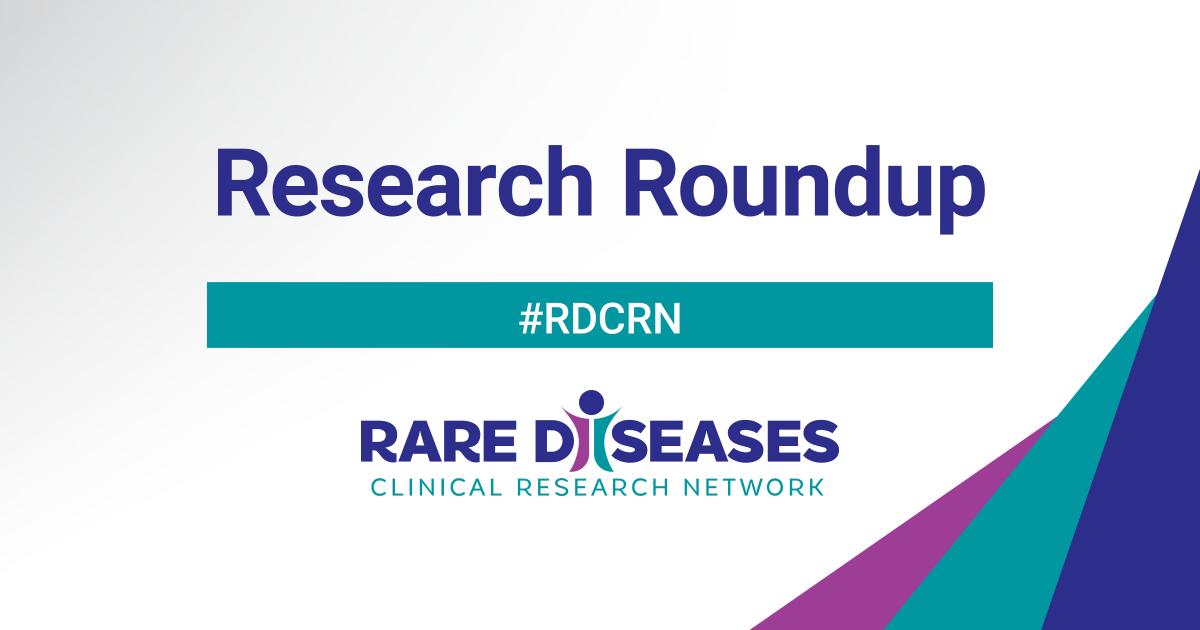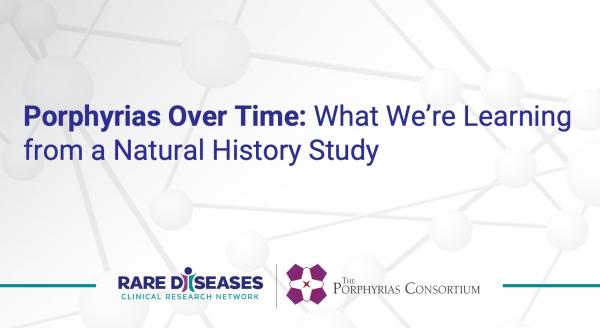Each month, we share summaries of recent Rare Diseases Clinical Research Network (RDCRN) grant-funded publications. Catch up on the latest RDCRN research below.
Jump to:
- Brain Vascular Malformation Consortium (BVMC)
- Consortium of Eosinophilic Gastrointestinal Disease Researchers (CEGIR)
- Clinical Research in ALS and Related Disorders for Therapeutic Development (CReATe)
- Frontiers in Congenital Disorders of Glycosylation Consortium (FCDGC)
- Nephrotic Syndrome Study Network (NEPTUNE)
Brain Vascular Malformation Consortium (BVMC)
Novel Gene Mutation Provides Insight into Sturge-Weber Syndrome and Capillary Malformation
Sturge-Weber syndrome (SWS) is a condition resulting in abnormal blood vessel development in the brain, eyes, and skin at birth. A hallmark feature is capillary malformation, also known as a port-wine birthmark (a red, pink, or purple facial birthmark). SWS and capillary malformations are both caused by mutations in the GNAQ gene.
In this study, researchers sequenced skin biopsies of capillary malformations from nine patients. They identified the same type of GNAQ mutation (R183Q) in nearly all samples. However, one sample exhibited a new type of GNAQ mutation (Q209R). To explore its effects, the team compared this new mutation with other GNAQ mutations.
The authors found that although the different mutations varied in signaling strength, they all had the same effects in cells. Since some of these same mutations are also found in cancer, pharmaceutical companies are working on inhibiting the effects of this gene. Thus, drugs that may work for certain cancers with GNAQ mutations may also work for SWS.
Consortium of Eosinophilic Gastrointestinal Disease Researchers (CEGIR)
Online Communities Illuminate Needs and Goals of Patients with Eosinophilic Esophagitis
Eosinophilic esophagitis (EoE) is an allergic inflammatory disease that damages the esophagus. Little is known about how patients with EoE experience their symptoms, receive care, and cope with their disease. Often, patients seek peer support from online communities. As an unfiltered source of patient perspectives, these communities can provide insights on unmet needs and barriers to care.
In this study, researchers performed a qualitative analysis of electronic health forums to characterize patient-to-patient conversations about EoE symptoms and the experience of disease. The team analyzed a random sample of conversation threads from three publicly accessible electronic health forums hosting EoE communities.
Results showed that patients with EoE interpret their disease as sporadic events and lack reliable sources of knowledge, which may influence how they prioritize treatment. Authors note that providers should equip themselves with evidence-based knowledge, engage in shared decision-making, and look outside of clinical settings in order to recognize barriers to disease management.
Clinical Research in ALS and Related Disorders for Therapeutic Development (CReATe)
Amyotrophic lateral sclerosis (ALS) is traditionally regarded as a clinical syndrome. Emerging biomarker evidence of disease prior to clinical manifestations of disease, however, have fostered the view that ALS should be considered a biological entity with pre-symptomatic and clinically manifest stages of disease. New data from Pre-fALS, a natural history and biomarker study of people at genetic risk for ALS, now indicate that pre-symptomatic should not necessarily be taken to mean “clinically silent.”
Systematic clinical characterization of 20 phenoconverters–pre-symptomatic gene mutation carriers who have been followed from the pre-symptomatic to the clinically manifest stages of disease–reveals evidence of a prodromal state of mild motor impairment (MMI). MMI is characterized by symptoms, signs, or electromyographic findings that represent a departure from normal, but which are insufficiently severe or widespread to clearly indicate ALS. The duration of prodromal MMI varies among carriers of different genetic mutations.
Based on these findings, the authors conclude that in three of the most common genetic forms of ALS, MMI is an observable state that is prodromal to clinically manifest disease. The authors hypothesize that this may also be true for all genetic ALS and non-genetic forms of ALS as well. Importantly, MMI is considered both an intermediate (transitional) and an indeterminate state, as not everyone with MMI will progress to develop ALS. As a new diagnostic label, MMI should generate fresh urgency for developing diagnostic biomarkers that might permit earlier therapeutic intervention.
Frontiers in Congenital Disorders of Glycosylation Consortium (FCDGC)
Researchers Describe GMPPA-Congenital Disorder of Glycosylation, a Rare Cause of Pediatric Achalasia
Achalasia is a disorder of the esophagus, the tube that carries food from the mouth to the stomach. It is characterized by enlargement of the esophagus, impaired ability of the esophagus to push food down toward the stomach (peristalsis), and failure of the ring-shaped muscle at the bottom of the esophagus (the lower esophageal sphincter) to relax.
Because achalasia is rare in the pediatric population, clinicians should consider associated genetic disorders. This includes GMPPA-congenital disorder of glycosylation (CDG), a rare type of CDG that is caused by variants in the GMPPA gene.
In this study, researchers describe a 9-month-old female with achalasia and alacrima (reduced or absent ability to produce tears). The patient was found to have two novel compound heterozygous variants in the GMPPA gene that are associated with GMPPA-CDG. Authors provide a brief review of GMPPA-CDG, including management of this condition.
Nephrotic Syndrome Study Network (NEPTUNE)
Surveys Reveal Common Medication Nonadherence in Pediatric Nephrotic Syndrome
Nephrotic syndrome is a group of symptoms caused by a variety of disorders that damage the kidneys. Pediatric patients with nephrotic syndrome take medications long-term with significant toxicity and complex regimens. However, not much is known about medication adherence in this population.
In this study, researchers aimed to understand the determinants of medication adherence and its potential impact on clinical outcomes in childhood nephrotic syndrome. A total of 225 adolescent patients under 19 years old and caregivers completed medication adherence surveys during a 3-year follow-up. Researchers assessed the relationship between adherence and subsequent steroid response, as well as healthcare utilization.
Results show that medication nonadherence is common in pediatric nephrotic syndrome. Nonadherence did not show statistically significant associations with steroid resistance or frequency of hospitalizations and emergency room visits. Authors state that more research is needed on the use of surveys in the clinical setting to identify at-risk patients, as well as ways to support families over time.
The Rare Diseases Clinical Research Network (RDCRN) is funded by the National Institutes of Health (NIH) and led by the National Center for Advancing Translational Sciences (NCATS) through its Division of Rare Diseases Research Innovation (DRDRI). Now in its fourth five-year funding cycle, RDCRN is a partnership with funding and programmatic support provided by Institutes, Centers, and Offices across NIH, including the National Institute of Neurological Disorders and Stroke, the National Institute of Allergy and Infectious Diseases, the National Institute of Diabetes and Digestive and Kidney Diseases, the Eunice Kennedy Shriver National Institute of Child Health and Human Development, the National Institute of Arthritis and Musculoskeletal and Skin Diseases, the National Heart, Lung, and Blood Institute, the National Institute of Dental and Craniofacial Research, the National Institute of Mental Health, and the Office of Dietary Supplements.






